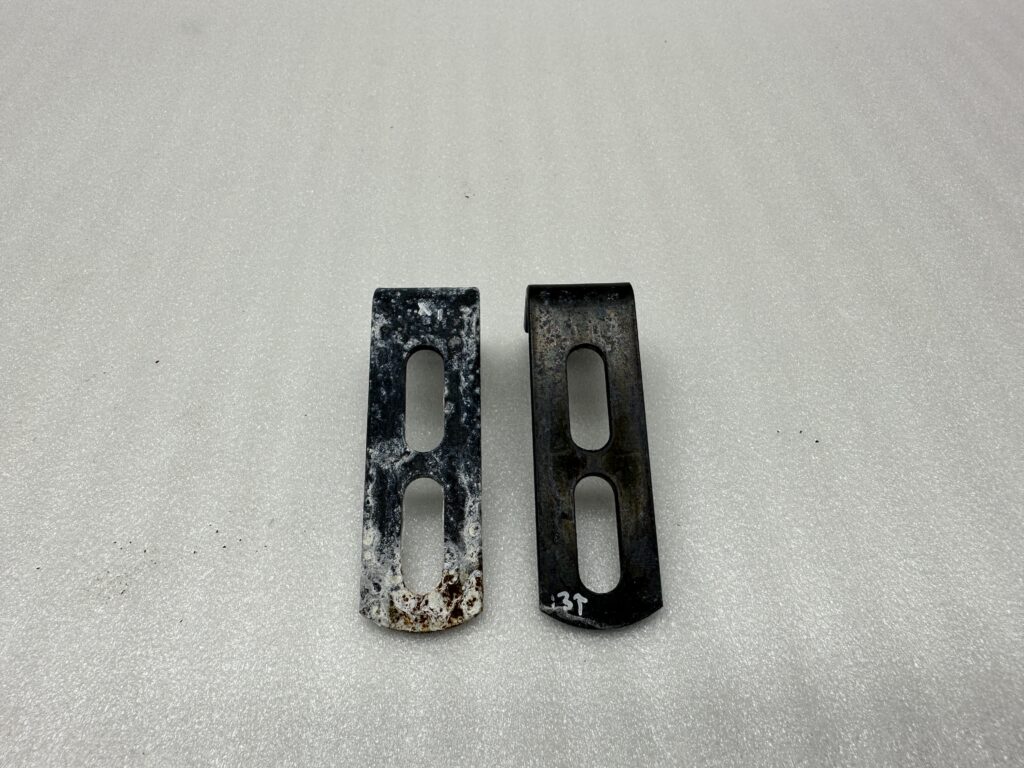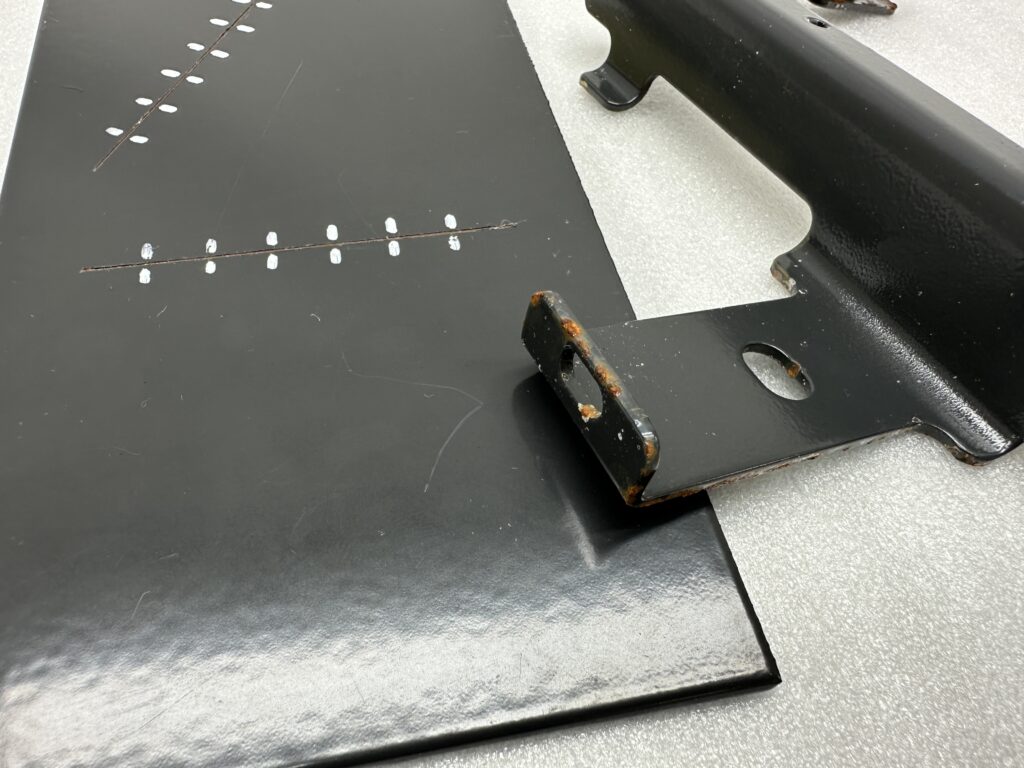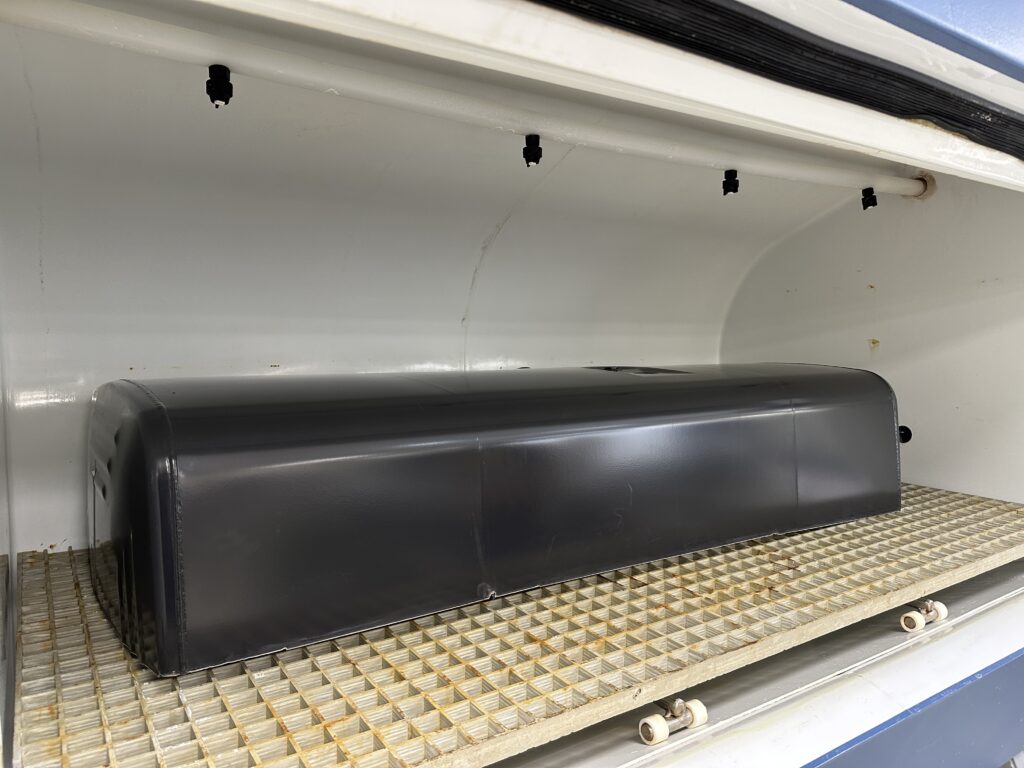Technical article
Why Cyclic Corrosion Testing?
The yearly loss of 3-4% of GNP in favour of corrosion decay has been a fact oven the last couple of years. Corrosion can cause damage to any product, reduce its lifespan, and affect its performance, which can lead to safety hazards or financial losses. By adequately testing the coating, manufacturers can evaluate its resistance to corrosion and make improvements where necessary.
There are several types of corrosion tests that can be conducted on coated products, for example salt spray, humidity, immersion, and cyclic corrosion tests. These different tests simulate harsh environmental conditions the product probably will be exposed to during average use, such as saltwater, moisture, or chemicals. By exposing the coated product to these conditions for a specified duration, one can determine the coating’s effectiveness in preventing corrosion, and decide whether the product needs additional coating or protection.
In summary, exposing coated real products to corrosion during test is important when assessing the durability and effectiveness of the coating. It helps ensure that the product will last longer, perform well, and will reduce safety risks or financial loss caused by corrosion. And let´s not forget about the sustainability aspect.
Is it possible to produce the perfect product, that can withstand any climate conditions?
All metallic materials (except for 24k gold) degrade sooner or later. Do you, as well as we, prefer later? If so, make sure the product that you sell, use, buy, construct or coat, face an environment free of moisture and oxygen. That is of course, not likely possible in real life.
The choice of coating, its thickness, on what substrate, what it is used for, indoor- or outdoors and in what part of the world; are factors to consider. If your sub-contractor makes changes; material, alloy, or chemistry, you may have a problem downstream. So, how do you handle this challenge?
- Key1: Communication with your subcontractor, and frankly I mean communication where we have 2 ears for listening and one moth to speak your mind about who is boss in the supply chain. We need to be open to changes that can occur and work together to find the solutions.
- Key2: Continuously testing strategy: The other factor to consider is continuously testing the functionality of the coating towards the elements your product must withstand. The strategy must be clear, how often to test and for what purpose.
In present times where energy and chemical prices increase, it can be hard to find and to keep the right level of quality in coating production over time. I guess all products have a week spot!? In opposite it is overqualified and too expensive to produce.
Frequent corrosion testing that mimics real-life exposure
When the coating is applied, the surface can withstand any condition, but for how long? The time factor is the key. The solution to the problem is very complex. Let me try to explain.
The questions here are essential; Where is the final product used? Inside or outside, and are there any chemicals present? What about lightly acidified rain, salt in humid air close to the coastline or even out at sea? The protection can be applied by the best job-coater there is, that means you! In full control over the chemical concentrations and many other just as important parameters, and that is often not enough to obtain the end customers full satisfaction.
The substrate on the product is often well specified and the same for many consecutive years, and everybody are sure how to prepare the product for perfect adhesion of the coating. Under those circumstances the product often is tested, and it is most likely tested just once.
That once is normally performed on a similar product, a less complex geometry, with a similar but not identical coating, and not the same intended use. The first product holding a minimum of complaints from the customers even after several years on the market. The new product on the opposite, have complaints rising exponentially each year that go by. End customers keeps complaining about appearance and oxidation. The later stage in the degradation process when the product face flaws on the substrate level, red rust, and dysfunctionality with accidents and disasters to follow.
Picture below.
Exposure for 720h. Cyclic atmosphere (left) versus constant salt spray method (right). Oxidation of the Zn-layer as well as base metal corrosion can be seen on the item to the left. The item to the right only shows a small amount of interlayer corrosion, or white haze, close to the marking.

What can be done to prevent unforeseen events?
Be true to yourself when it comes to quality investigations. Ask yourself this; How can I test my product the best way to mimic real life conditions? Are 5% constant salt mist and 35 degrees Celsius a climate the product is facing? Or does the product sometimes get wet, dry, warm, and cold? What about the Relative Hydration? Is that on the constant or fluctuate with the temperature changes through days and seasons? Low concentrations of salt in dry warm air can be accumulated on the surface and lead to oxidation of a coating when it is cooled. The hygroscopic aspect, salt involved, is proof enough that adequate testing is done in cyclic conditions with variable humidity and temperatures.
Different test methods
There are several corrosion test methods used in industry for testing materials, and their sensitivity to corrosion. When it comes to atmospheric corrosion there are generally two paths to walk. On the first path you will find the constant tests, often involving shorter duration and easy test access. On the other, cyclic tests that simulate the environment in which the materials are used, can be found. Some of the most common methods and their advantages and downsides are as follows:
- Constant corrosion tests. Salt Spray (ISO 9227 & ASTM B117) or without salt, Constant Humidity (ISO 6270-1 & ISO 6270-2): These tests are used to evaluate the corrosion resistance of coatings and materials. The specimen is exposed to a continuous mist of saltwater in a chamber for a specific duration. The advantages of these tests are that they are widely recognized standards, and you can easily find the weakest spot of a sample. Fine-tuning of the standard parameters and the repeatability of the results is often discussed though. The other disadvantage is that it does not replicate real-world conditions accurately, and the test duration may not correlate with the real-time lifespan of the specimen.
- Cyclic Corrosion Tests (many standards can be mentioned, among those many belong to the Automotive OEMs, for example, VW PV1210, Volvo ACT 423-0014, Scania STD4319, Ford L476 & ASTM G85) These tests subject the specimen to alternate wet and dry conditions and exposure to salt spray and in some cases acidification. This method is advantageous as it can provide insights how different environmental factors impact the material’s corrosion resistance. The disadvantage is that it requires a specialized chamber, and the test duration can be longer than what you are used to.
Note! You shouldn’t be afraid to apply the advantages of a cyclic corrosion standard on a non-automotive product. Many times, it is the similar environment, and you must consider the OEMs have spent a truckload of money into their 50+ years of research, finding an adequate method for quality control.
Overall, the selection of a corrosion test method depends on the specific application and the desired results. It is crucial to choose the appropriate test that accurately replicates the material’s expected exposure to the corrosive environment.
Cyclic corrosion testing, the 4 advantages
What are the advantages of cyclic corrosion testing? Cyclic corrosion testing (CCT) is a type of accelerated laboratory testing that exposes test specimens to alternating cycles of salt spray, humidity, and/or other environmental conditions. Some of the advantages of CCT include:
- Real-world simulation: Allows simulation of natural environmental conditions that can lead to corrosion, such as humidity, salt exposure, and temperature changes. This provides a more accurate representation of how a material or coating will perform in real-world conditions, compared to other forms of corrosion testing.
- Time-saving: CCT can accelerate the corrosion testing process compared to on-site or SCAB testing, allowing faster and more efficient evaluation of materials and coatings. This can save time and resources compared to conducting long-term exposure testing in field environments. When turning reality into a test method there always that point where acceleration have reached its limit of reliability. Stepping over it, accelerating the cycle further makes the test less to not reliable at all. If you can wait another few days/weeks and select the right method the results that come out of the project enable you to make great future decisions.
- Cost-effective: By accelerating the corrosion process, CCT can highlight any weaknesses in materials or coatings in a shorter timeframe, which can reduce the need for costly redesigns or failures in the field.
- Standardization: CCT is often conducted in accordance with industry standards and protocols, providing a standardized testing method that can be used to compare the performance of different materials and coatings.
Real product versus test plates
Why test real products instead of fabricated test plates? By testing the coating by itself you can often acquire better results than what is possible in real life conditions and daily use. The main reason is that the substrate and geometry of the test plate mimic perfect conditions. A flawless plain surface with a tailored micro structural topography manufactures from a homogenous metallic material. Ask yourself this, and be honest, what is the purpose of testing? Do you want to have perfect results or find the weak spots in productions and coating process? When looking for a test and surface treatment verification don’t be shy to ask for support. Your partner laboratory has seen it all, with several thousands of products tested over the years, demands and complications of all kinds. Your obstacles can be overcome in an instant by contacting your partner test lab.
Picture below.
Test plate vs real product corrosion behaviour. No spread of corrosion from scribed line on the plate, nor general corrosion attacks. The weak spots of a real product, in this case the sharp edges, can easily be detected. You can also see a tendency of orange peel on the real product. In this case the geometry makes it less easy to paint compared to the plate.

Testing – a solution for sustainability
When we cooperate, share valid information and knowledge the Italian and whole European industry will be rewarded. Together we can reduce waste and make the industry more sustainable. When the level of quality control is high and sufficient, we can compete on the highest level of the world market. The partnership between MaterialScan S.r.l and Proton Technology in Sweden is a vigorous demonstration that small steps can have huge impact on the market in general. What one country have more of, that is the prosperous Italian industry, other markets can satisfy with lab services from Sweden. The Corrosion Test Center in Sweden can supply a high number of tests, and surface analysis and with the capacity of 25 square meters of test area in 15 chambers. Several hundred components or whole motorcycle frames can be tested in one shot. The accredited report can be delivered within 24 hours.
Picture below.
Large components like this truck fuel tank (1750x650x550mm) can easily fit into one of the big chambers at Proton Technology. In the roof the swaying rain nozzles, spraying the electrolyte, can be seen. The rounded inside of this chamber makes the air flow freely around the object, giving the whole chamber a homogenous test cycle.
